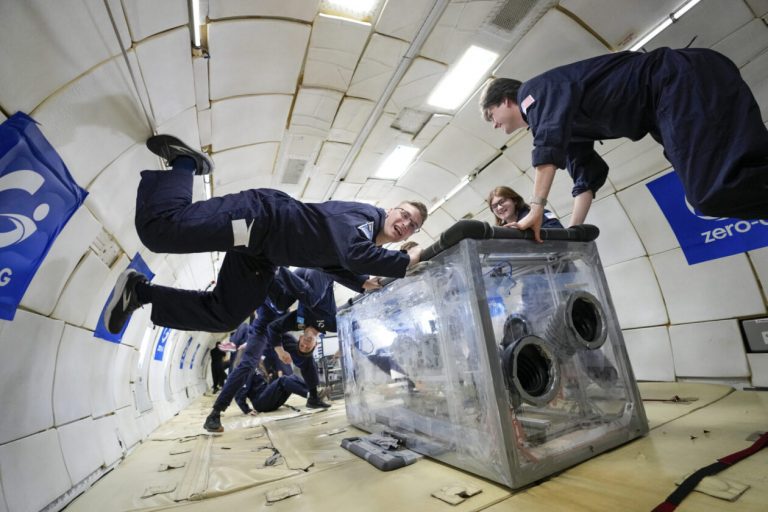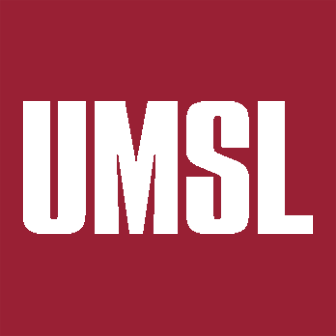On a Friday afternoon in May, four Missouri S&T seniors donned flight suits and experienced the moon’s gravity as part of a flight-testing project supported by NASA’s Flight Opportunities program. The next day, they traded their suits for caps and gowns and crossed the stage at S&T’s commencement ceremony, each earning a bachelor’s degree in aerospace engineering.
“The whole trip felt like a fever dream,” says Justin Viers of Dexter, Missouri. “We were juggling final projects, exams and months of research preparation all at once. I was wrapping up a month-long project for a graduate-level course just before we hit the road to Kansas. It was a whirlwind experience but absolutely worth it.”
The students were part of a research team led by Dr. Frank D. Han, an associate professor of aerospace engineering and geological engineering at S&T. They were testing a system designed to collect and sort the regolith, or loose surface material covering the Moon, with a magnetic separator and an electrostatic sieve developed for previous NASA research.
Han says his ultimate goal is to use this technology to process manufacturing materials for future settlements on the Moon.
The Boeing 727 the students were on was part of a Zero Gravity Corp. flight conducted out of the Salina Regional Airport in Kansas. During the flight, the plane performed multiple parabolas, or steep, arc-shaped maneuvers, creating approximately 20-second windows of gravity conditions one-sixth of that on Earth. A total of 10 S&T researchers participated in test flights over the course of two days.
Inside the aircraft, the S&T researchers operated their technology in a box about the size of a soda vending machine, fitted with built-in gloves to work with different samples of simulated moon materials.
“This was unlike anything I could have imagined,” Viers says. “Experiencing lunar gravity aboard a Boeing 727 felt like going over the top of a roller coaster — except this time, there were no straps holding me in. It was also deeply rewarding knowing that very few college students get the chance to conduct hands-on research in this type of flight environment.”
Joshua Eiter of Chatham, Illinois, who is now a commissioned officer for the U.S. Space Force, shared similar sentiments about working in lunar gravity.
“This is something that I will be able to leverage for the rest of my future academic and professional career,” he says. “It was a life-changing experience that should help to open a lot of doors in the future.”
Along with the excitement, Han says the mission also delivered beneficial results.
“Our hardware worked just as we’d designed it to,” he says. “We collected plenty of data, and now we’re studying the results. We’re also excited to hopefully have more flight-testing opportunities in the future to keep refining the system.
“This experience was a giant leap for our research team — and one small step toward humans eventually living on the moon.”
Trey Brown of Rolla, and Jonah Little of Sullivan, Missouri, were also graduating seniors on the team.
Other S&T researchers on the flights included:
- Blake Coffman, a junior in aerospace engineering from St. Louis
- Mitch Cottrell, an engineer and machine shop supervisor for mechanical and aerospace engineering
- Gabriel Porter, a junior in aerospace engineering from St. Louis
- Lindsay Manteufel, a senior in aerospace engineering from Neenah, Wisconsin
- Marissa Verduin, a junior in aerospace engineering from Chatham, Illinois
Missouri S&T co-principal investigators involved with the research include Dr. David Bayless, professor and chair of mechanical and aerospace engineering; Dr. William Schonberg, professor of civil engineering, and Dr. Jeffrey Smith, professor of materials science and engineering. The team also includes Dr. Fateme Rezaei from the University of Miami and Dr. Kirby Runyon from the Planetary Science Institute.
For more information about Missouri S&T’s aerospace engineering programs, visit mae.mst.edu.


